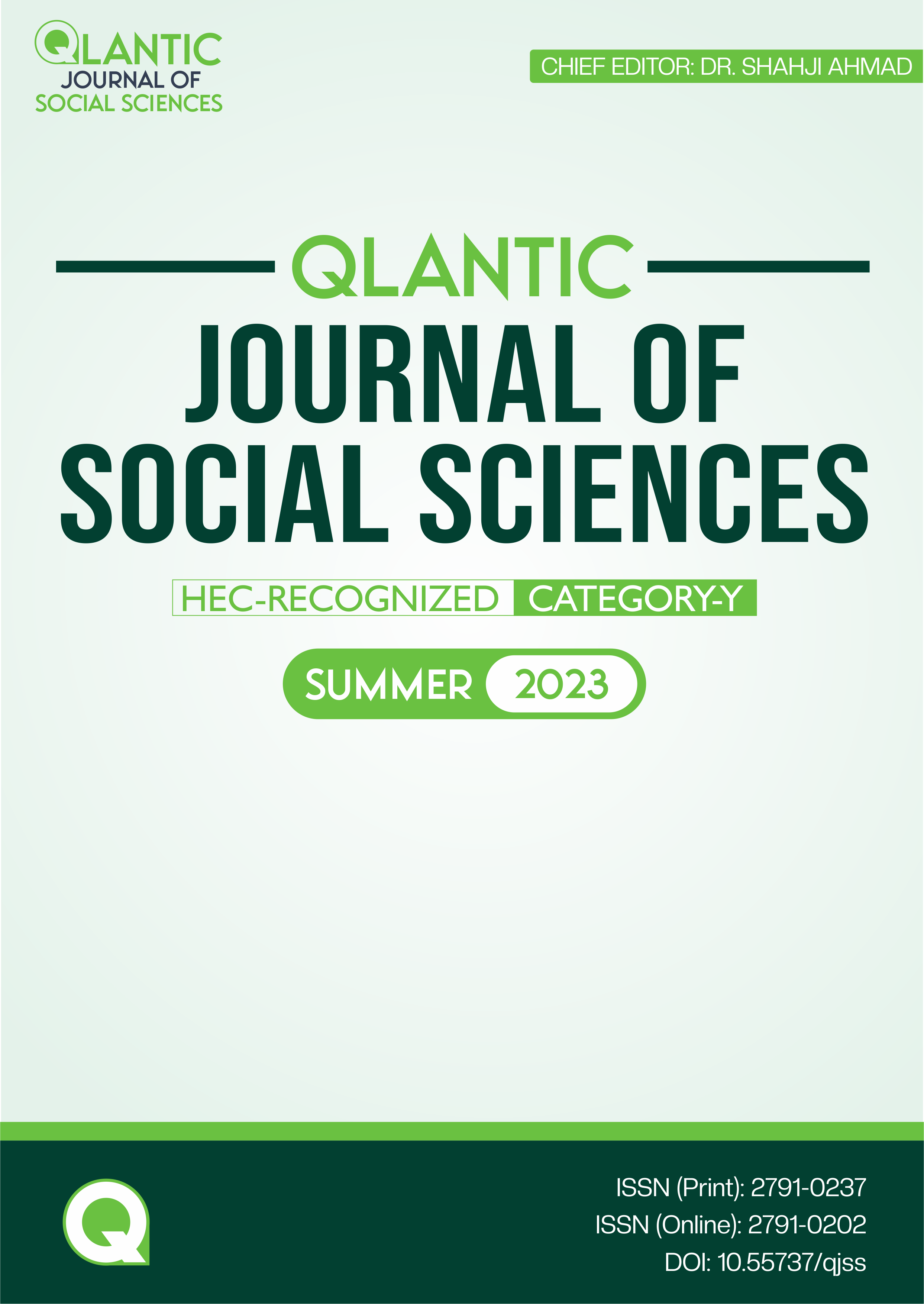Alleviation of Educational Stress of Visually Impaired Students through Intelligent Virtual Assistant at College Level
DOI:
https://doi.org/10.55737/qjss.766231428Keywords:
Intelligent Virtual Assistant, Higher Secondary Level, Education, College Level, StudentsAbstract
Students with visual impairment find it difficult to explore their environment due to their visual limitations and face challenges. The inaccessible physical environment of academic institutes, inflexible assessment techniques, and dependence on others to accomplish tasks are causes of stress for visually impaired people they face in their studies. The current study was conducted to explore the lived experiences of visually impaired students using Intelligent Virtual Assistants studying at a secondary level of education. A phenomenological interpretive approach was implied for data collection. For this purpose, 15 participants were selected for in-depth interviews through a semi-structured guide. All the interviews were recorded and transcribed. Coding was made, and themes were derived. Analysis of data in the form of Findings indicated that Visually impaired students use various features of IVAs in their education and daily living. The use of IVAs has improved their accessibility, mobility, independence, motivation, confidence, autonomy, and social integration, which have played a positive role in their studies and daily lives. It is recommended that the use of technology should be encouraged in educational institutions for people having special needs. Educational institutes may take full advantage of technology to impart education to people who have special needs.
References
Arslantas, T. K., & Gul, A. (2022). Digital literacy skills of university students with visual impairment: A mixed-methods analysis. Education and Information Technologies, 27(4), 5605-5625. https://doi.org/10.1007/s10639-021-10860-1
Attride-Stirling, J. (2001). Thematic networks: An analytic tool for qualitative research. Qualitative Research, 1(3), 385-405. https://doi.org/10.1177/146879410100100307
Braun, V., & Clarke, V. (2006). Using thematic analysis in psychology. Qualitative Research in Psychology, 3(2), 77-101. https://doi.org/10.1191/1478088706qp063oa
Cologon, K. (2020). Is inclusive education really for everyone? Family stories of children and young people labelled with ‘severe and multiple’ or ‘profound’ ‘disabilities’. Research Papers in Education, 37(3), 395-417. https://doi.org/10.1080/02671522.2020.1849372
Creswell, J. (2014). Research design: Qualitative, quantitative, and mixed methods approaches (4th ed.). Thousand Oaks, CA: SAGE.
Fuller, M., Bradley, A., & Healey, M. (2004). Incorporating disabled students within an inclusive higher education environment. Disability & Society, 19(5), 455-468. https://doi.org/10.1080/0968759042000235307
Hanif, T., Naz, S., Ahmad, A., & Azmat, M. (2022). A pragmatic approach to academic challenges of students with visual impairment during COVID-19: Teacher’s experiences. Pakistan Journal of Humanities and Social Sciences, 10(4). https://doi.org/10.52131/pjhss.2022.1004.0315
Hoy, M. B. (2018). Alexa, Siri, Cortana, and more: An introduction to voice assistants. Medical Reference Services Quarterly, 37(1), 81-88. https://doi.org/10.1080/02763869.2018.1404391
Karellou, J. (2020). Filling the gap: Students with disabilities and their perceptions about higher education accommodations in Greece. Journal of Disability Studies, 6(1), 3-12.
Kumar, R. S., & Side, A. S. (2015). Academic stress and coping strategies among students with disabilities in Addis Ababa University. Eastern Africa Social Science Research Review, 31(2), 83-100. https://doi.org/10.1353/eas.2015.0008
Lal, K. (2014). Academic stress among adolescent in relation to intelligence and demographic factors. American International Journal of Research in Humanities, Arts and Social Sciences, 123-129.
Namatherdhala, B., Mazher, N., & Sriram, G. K. (2022). A comprehensive overview of artificial intelligence tends in education. International Research Journal of Modernization in Engineering Technology and Science, 4(7)
Smith, D. C., Karahan, H., Wijeratne, H. R., Al-Amin, M., McCord, B., Moon, Y., & Kim, J. (2022). Deletion of the Alzheimer’s disease risk gene Abi3 locus results in obesity and systemic metabolic disruption in mice. Frontiers in Aging Neuroscience, 14. https://doi.org/10.3389/fnagi.2022.1035572
Stambekova, A., Zhakipbekova, S., Tussubekova, K., Mazhinov, B., Shmidt, M., & Rymhanova, А. (2022). Education for the disabled in accordance with the quality of inclusive education in the distance education process. World Journal on Educational Technology: Current Issues, 14(1), 316-328. https://doi.org/10.18844/wjet.v14i1.6760
Tai, T. (2022). Effects of intelligent personal assistants on EFL learners’ oral proficiency outside the classroom. Computer Assisted Language Learning, 1-30. https://doi.org/10.1080/09588221.2022.2075013
Terzopoulos, G., & Satratzemi, M. (2019). Voice assistants and artificial intelligence in education. Proceedings of the 9th Balkan Conference on Informatics. https://doi.org/10.1145/3351556.3351588
Wijeratne, D., Dennehy, D., Quinlivan, S., Buckley, L. A., Keighron, C., & Flynn, S. (2022). Learning Without Limits: Identifying the Barriers and Enablers to Equality, Diversity, and Inclusion in IS Education. Journal of Information Systems Education, 33(1), 61-74.
Yusof, Y., Chan, C. C., Hillaluddin, A. H., Ahmad Ramli, F. Z., & Mat Saad, Z. (2019). Improving inclusion of students with disabilities in Malaysian higher education. Disability & Society, 35(7), 1145-1170. https://doi.org/10.1080/09687599.2019.1667304




